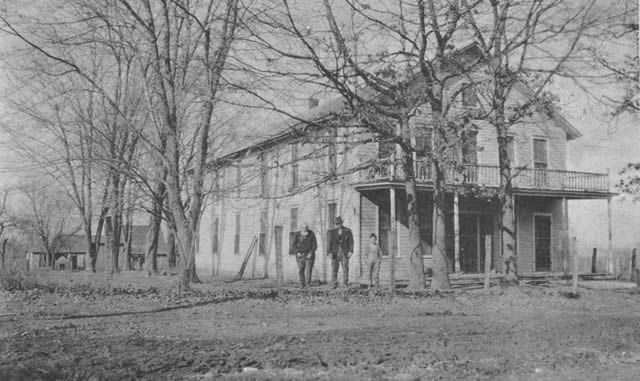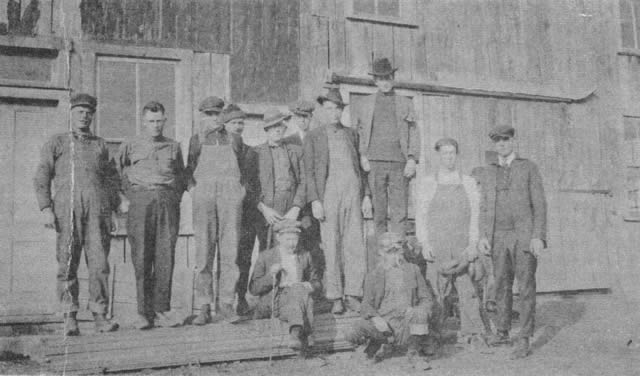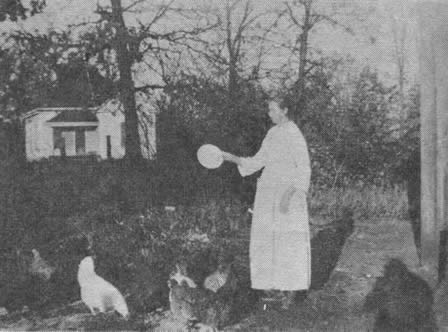Volume 1, Number 8 - Summer 1963
Early History Of Taneyville
by Roy E. Stout
Here are some facts about the early history of Taneyville, Missouri. Some of the dates I obtained have varied but the happenings about which I write occurred between the year 1885 up to the early 1900's
By 1891 Taneyville had grown into a thriving little town located very near the center of Taney County. The town was first laid out by Henderson and Wilkey, but at a later date another man by the name of Johnston laid out another plot which was called Taneyville. There were just two homes built in this area-the Kilby and Gordon homes. What we call Taneyville is "Taney City North Division" by the plots and courthouse records. The government named the postoffice Taneyville which was likely responsible for the town being called Taneyville instead of Taney City.
A man by the name of Simons from St. Louis came here and built the first hotel which is still standing. Melvin Bird and his wife also operated the hotel for several years. This building was also used for a postoffice and store. From the balcony of this old hotel, William Jennings Bryan made a speech while running for president of the United States. From the dates I have obtained, this was in 1896.
Other old buildings have been torn down or burned. One of them was the Flat-top building just across the street from the Simons Hotel. This was a two storey building and was once used for the Town Hall. My father, Bert Stout, operated a drug store and barber shop in this building from 1896 to 1898.
Mr. Chandler built another store and in later years it was operated by John Morrow, Butler, Melvin Bird, and Frank Davis. This old building was converted into a home.
This little village also had a printing press opera ted by Mr. Wilhoit, and there were a furniture store, camp house, and livery barn and hotel run by a Mr. Speakman. Just right after the turn of the century, Mr. Osborne operated a hotel, livery stable, and harness and shoe shop. Marshall Hunter ran the main camp house, livery stable, and carried the mail from Chadwick to Forsyth.
There was a brick yard just west of town operated by Mr. Crutchfield. One old building made from these bricks is still standing on the main street of

The Simons Hotel. William Jennings Bryan made a speech from the hotel balcony in the presidential campaign of 1896. The photograph, taken about 1915, shows the Rev. Tom Bird, Melvin Bird, and Lee Bird. Melvin and his wife operated the hotel for several years. The old buitding will soon be torn down.
Photo courtesy Georgia Johnston Clements
[7]
Taneyville. It was built by Ham Russell. In later years J. N. Ray had a store there. When I was a boy, there was a "blind tiger" in this building, what they later called speakeasys.

The Bill Jones blacksmith shop and hall in the early twenties. Tom Osborne (seated, with cane) ran the shoe shop, livery stable, and hotel. Others in the picture are Rudolph Downing, Carl Clements, Charlie Jones, Tude Nagels, Charlie Dillon, Orville Stout, Don Sullenger, Oscar Dillon, Lawrence Davis, Fullie Reynolds, John Teigue.
There was just one church at that time, a Methodist church which was known in later years as the Union Chapel. This building has also been torn down.
Mills and blacksmith shops were always very busy, and I can remember three mills that have operated there in my time. There was a flour and saw mill located in the south part of town which was run by steam power. A huge pond was made to furnish water for the boiler. Mr. Simkins ran the saw mill, and Mr. Lou Reynolds operated the mill. Alva Wilson fired the boiler and ran the machinery. This mill was in operation when I was a boy. In the early days, a Mr. Dipley operated a saw mill and blacksmith shop in the north part of town. Other blacksmiths I can remember were Bill Jones, Bill Robertson, Jap Reynolds, and Charlie Barnett who is still living in his home in Taneyville.
Before the town was laid out, the whole community was a tobacco plantation established by an English colony which came to Missouri from New York State. A man by the name of Engleton was their leader. The old plantation house was located where the home of John Crouch now stands. Mr. Dickenson operated his first store at this location but later built a new building just south of there which was named Dickens after the writer, Charles Dickens.
Taneyville once had a race track where horse races were won and lost. This was located just east of the old plantation house. A railroad was surveyed through the town but it was never built. It did lead to having the town plotted and the streets named. When I was a boy, this little town was a stopping place for many of the freighters, many of them from Arkansas. The hotels were full most of the time due to salesmen staying overnight. The thing which impels me to write about these old things is that those of us who still remain are the last links between the new era being born and the old one with its memories of the past.

In the foreground, Mary Johnson of Taneyville who has been deceased for many years. In the background, the old Taneyville Chapel which was built either for a Methodist Church or parsonage.
[8]
This volume: Next Article | Table of Contents | Other Issues
Other Volumes | Keyword Search | White River Valley Quarterly Home | Local History Home
Copyright © White River Valley Historical Quarterly

